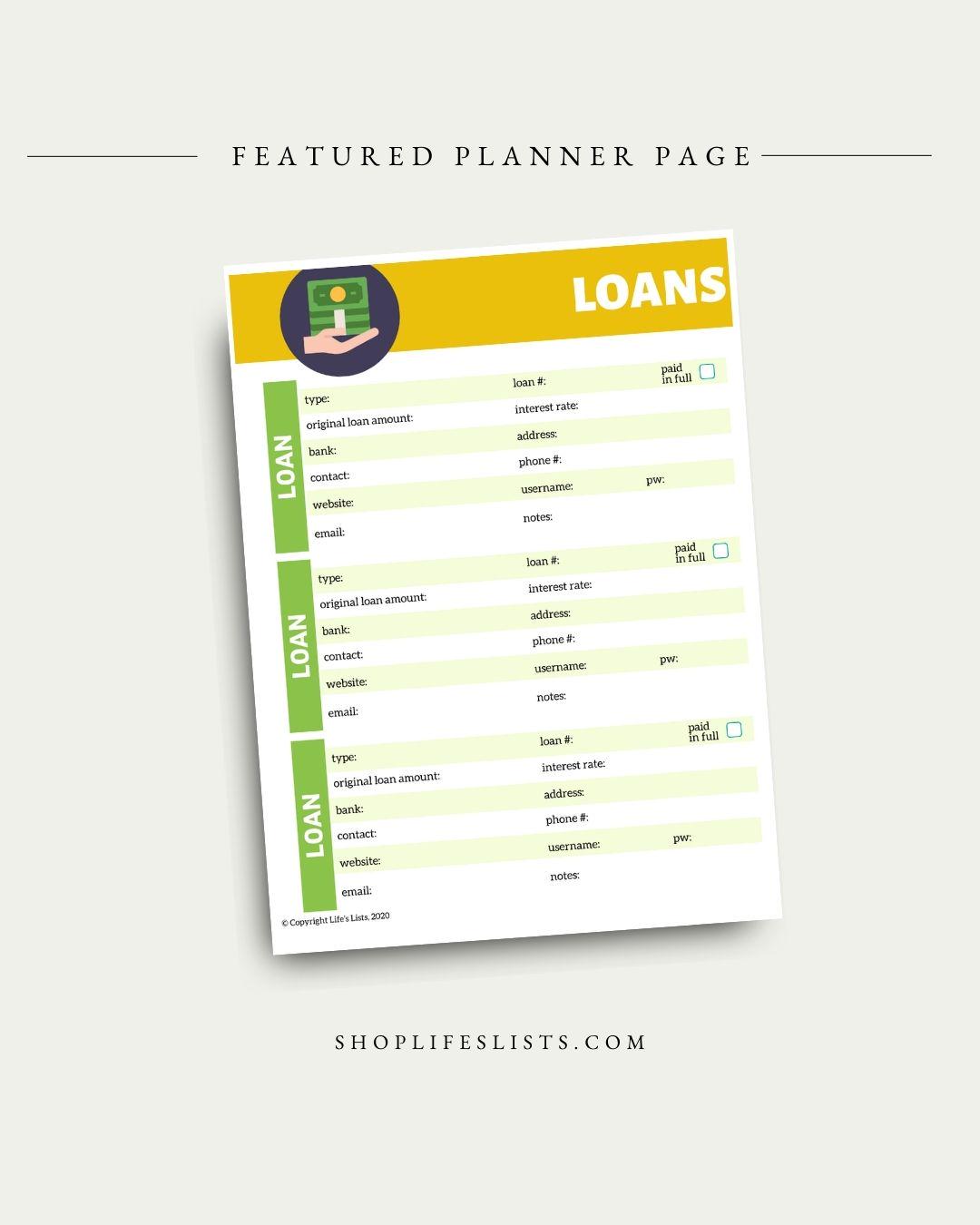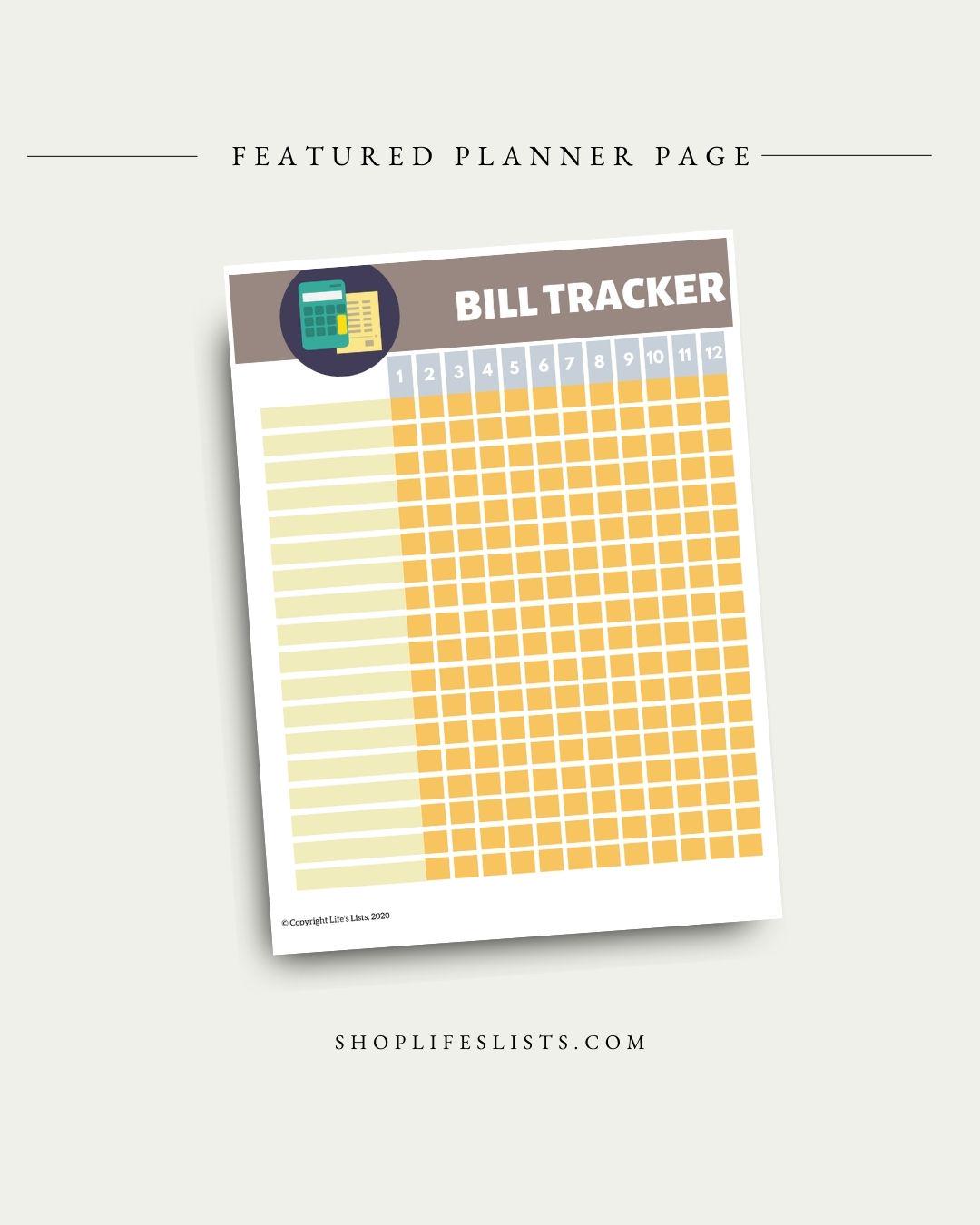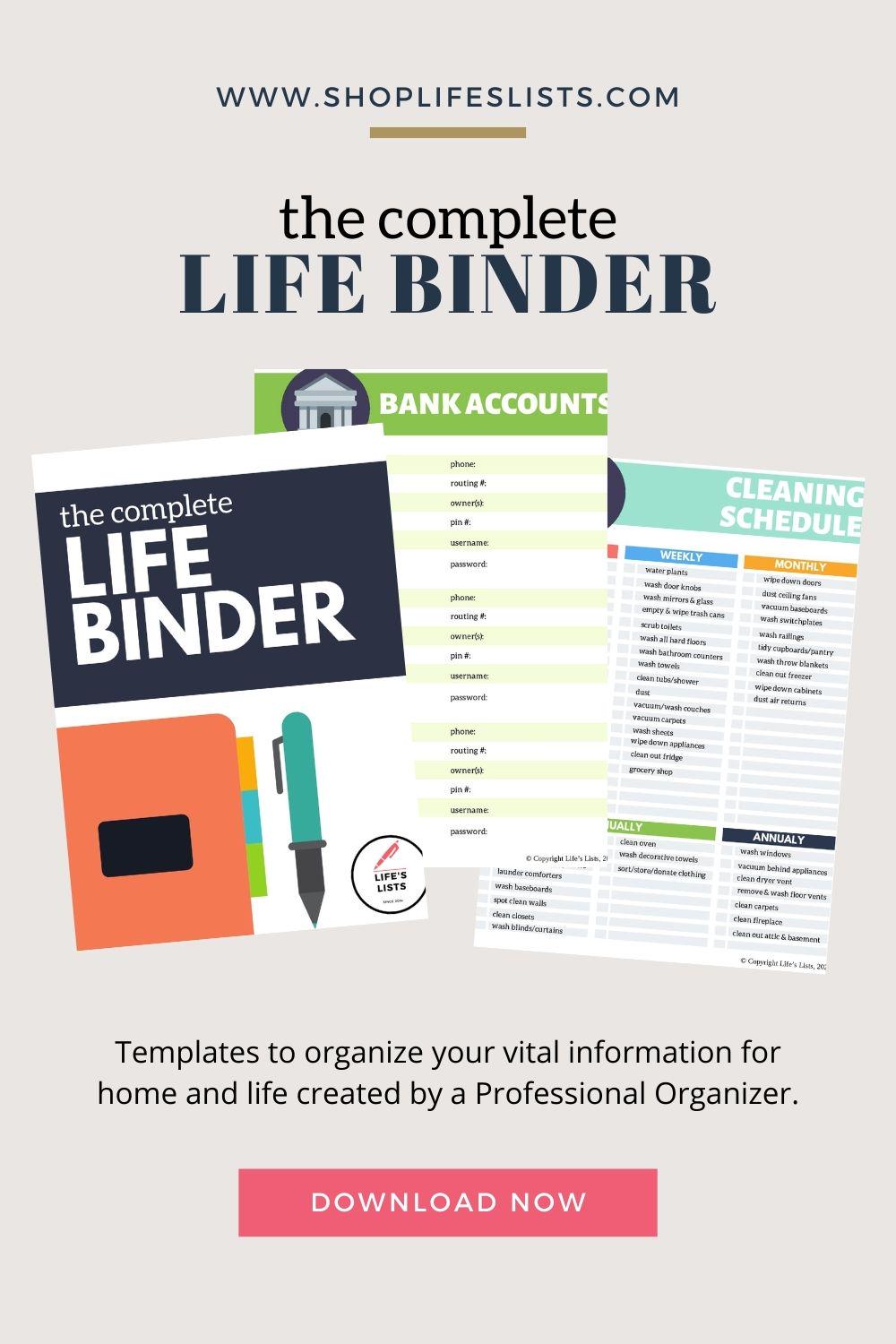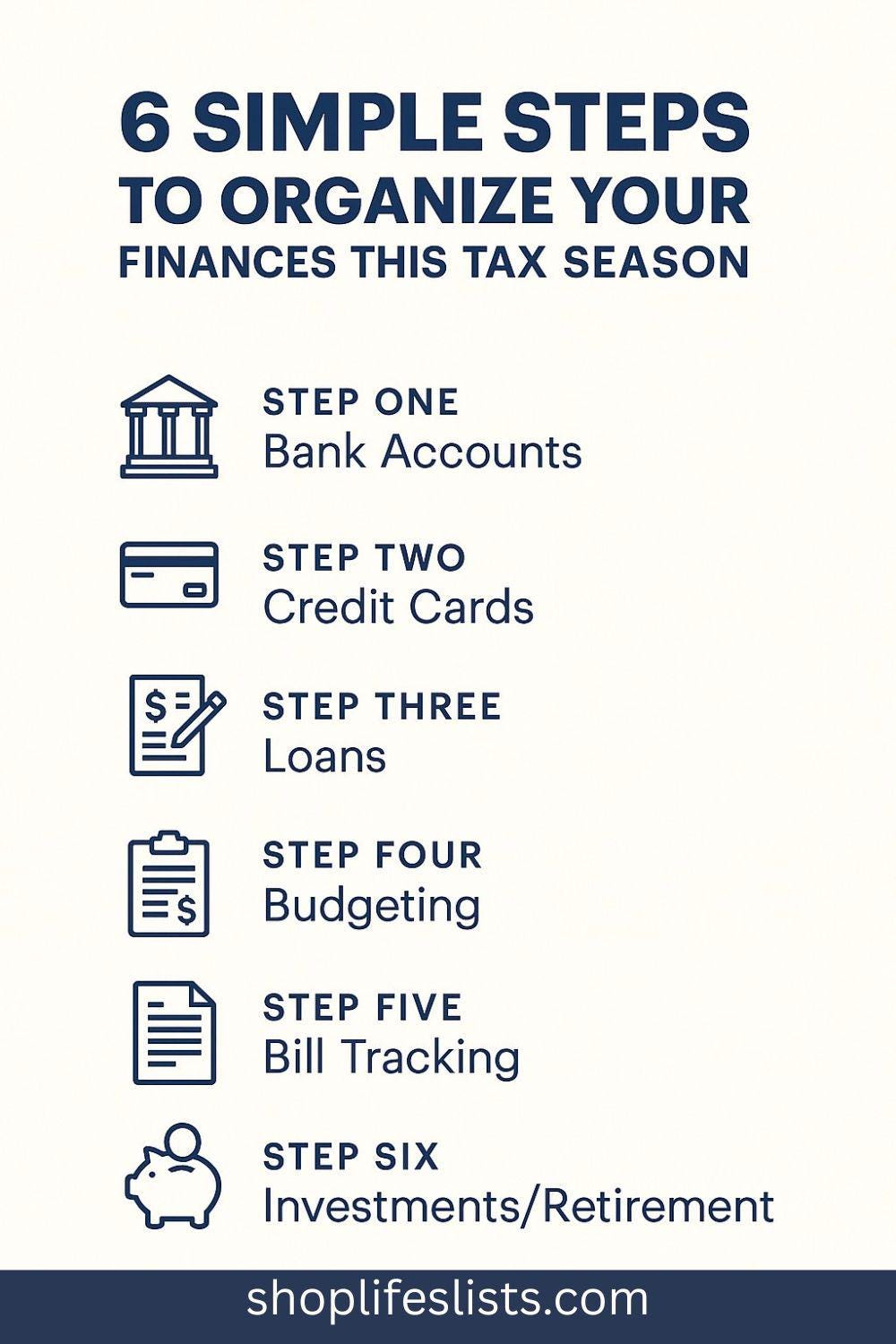With tax season upon us, many of us are once again forced to face our financial picture from the past year. As a professional organizer and bookkeeper with over two decades of experience, I understand how stressful this time of year can be—especially for those who avoid dealing with their finances. Meeting with your accountant often uncovers a slew of questions and leads to a frantic search for paperwork. But here’s the truth: when your finances are out of order, the impact goes far beyond taxes. You might be missing out on savings goals, overspending beyond your monthly income, or even damaging your credit score. That’s why gaining control over your finances—and the paperwork that comes with them—is essential for long-term financial health and retirement planning. To help you get started, I’ve broken the process down into six simple steps that will set you on the path to financial clarity.
Step One: Organize Your Bank Accounts
Start by taking inventory of all your open bank accounts. Are you juggling more than you need? Simplifying your finances starts with identifying what you actually use. Keep a record of each account, store monthly statements in a dedicated folder (physical or digital), and record your login credentials and banking apps for easy access. Even if you’re tempted to toss monthly statements, reviewing them can help catch errors and better understand your spending. I highly recommend reconciling your checking account each month—it’s surprising how often forgotten checks or deposit errors can occur.
Step Two: Stay on Top of Credit Cards
Credit cards should be reviewed monthly just like bank accounts. Save your statements, monitor for unauthorized charges, and store photocopies of your cards in case they’re ever lost or stolen. It’s common to see people rack up credit card debt in pursuit of rewards. But if you're paying more in interest than you’re earning in points, it’s time to reevaluate your strategy. Prioritize paying off cards with the highest interest rates and cut up cards you’re actively working to pay down. Watching your spending in cash instead of credit can be a real eye-opener.
Step Three: Track Your Loans
Just like credit cards, too many loans can add up fast. Whether you have a mortgage, car loan, business loan, or student debt, it’s important to keep all of your loan details in one easy-to-access place. Your accountant will thank you during tax season! Using a debt tracker is a powerful way to understand the life of each loan and how much interest you’re paying annually. Even making one extra payment per year can significantly reduce the overall cost of a loan.

Step Four: Create a Budget That Works
Once you know where your money is going, it's time to build a realistic budget. Most people avoid budgeting because it forces them to face spending habits head-on—but that’s exactly why it works. Be honest about your everyday expenses: How often do you eat out? Grab a coffee? Shop online? Track every expense for at least a month. Review your bank and credit card statements from the last three months to get an accurate picture of where your money is going. The results may surprise you.
Step Five: Develop a Bill Tracking System
Paying bills on time is key to maintaining good financial standing. Set up a system that works for you—whether it’s autopay, a weekly bill review folder, or using a bill tracker sheet to keep everything in one place. Use calendar reminders for major due dates, and hold yourself accountable to regular bill-paying sessions. Once this becomes a habit, it’ll feel much less overwhelming.

Step Six: Plan for Investments & Retirement
Ideally, once your expenses are under control, you’ll have money left to invest. Treat saving for retirement as a non-negotiable monthly “bill.” Paying yourself first ensures that you’re building a secure financial future. If you’re unsure where to start, don’t stress—many great financial advisors can help you define your goals and create a personalized plan. Interview a few until you find someone you trust and feel comfortable with. They can be a valuable partner in achieving long-term financial success.
Get Organized with the Life Binder
I created the Life Binder to help people like you take control of their financial (and household) organization. It includes printable templates to track your bank accounts, credit cards, loans, budget, bills, and more—all designed to help you get organized and stay that way. You can find it in my shop at Life’s Lists on Etsy. With just a bit of time and effort, you’ll be well on your way to managing your money, reducing stress, and planning for a better financial future.

Happy Organizing! Kristin
About the Author: Kristin Vander Wiede is a Professional Organizer and owner of Livable Solutions Professional Organizing and Life’s Lists, offering printable organizing systems, labels, and tools to simplify your life.

